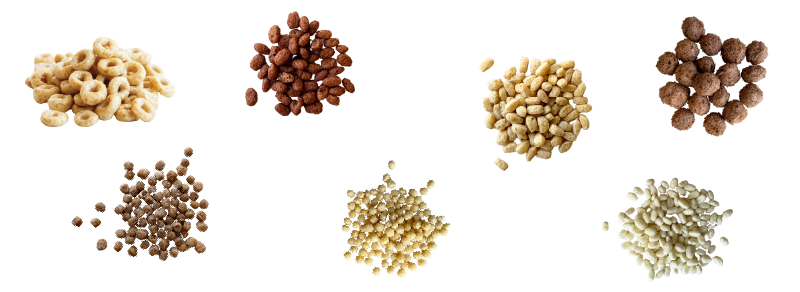THE RISE OF HIGH-PROTEIN CEREAL:
Fueling Breakfast Innovation
Breakfast is back, but not the way it used to be.

Today’s consumers are no longer reaching for sugar-laden cereals or skipping the meal altogether. Instead, they’re looking for nutrient-dense, high protein options that deliver energy, satiety, and simplicity to kickstart their day. And at the center of this breakfast evolution? High-protein cereal. What was once a sleepy category is now buzzing with innovation and protein is driving the momentum.
Consumers Want More Protein, Especially in the Morning
Protein has steadily moved from fitness circles into the mainstream. It’s now one of the top attributes consumers look for on food labels, with breakfast emerging as a key occasion for protein intake.
According to recent trend data:
- Over 60% of consumers say they’re actively trying to add more protein to their diets.
- Breakfast is the most common time of day people prioritize high-protein choices.
- Consumers link protein with benefits like energy, satiety, muscle maintenance, and metabolic health.
But many traditional breakfast options, especially ready-to-eat cereals, fall short, often delivering just 2–4 grams of protein per serving. That gap presents a massive opportunity for brands.
High-Protein Cereal: A Familiar Format with Functional Power
Cereal remains a staple in many households thanks to its convenience, affordability, and comfort. By infusing cereal with meaningful protein levels (8–15g per serving), brands can modernize a legacy format for today’s health-conscious shopper.
The beauty of high-protein cereal lies in its versatility:
- Ready-to-eat with milk or alt-milk
- Eaten dry as a crunchy snack
- Used as a topper or mix-in for yogurt bowls or smoothies
Formulating Cereal That Delivers on Protein and Experience
Formulators face the unique challenge of increasing protein content without compromising the light, crispy texture and flavor consumers expect from cereal.
Here’s where extrusion technology shines. Extruded cereal =can be tailored to deliver:
- Targeted protein levels (8–15g per serving)
- Diverse shapes and textures for sensory appeal
- Flavor-neutral or enhanced taste profiles
- Clean label positioning, depending on protein choice
Common protein ingredients used in high-protein cereals include:
- Whey or milk proteins for high PDCAAS and neutral flavor
- Plant proteins (pea, rice, fava) for vegan or allergen-friendly formulations
- Custom blends to balance nutrition, functionality, and cost
Innovation in Action: Where the Market is Heading
Emerging brands are already pushing boundaries with protein cereals that offer:
- Gluten-free or grain-free bases
- Low sugar with natural sweeteners
- Added fiber, vitamins, and adaptogens
- Snackable, resealable packaging for on-the-go eatin
The Takeaway: Now’s the Time to Rethink the Breakfast Bowl
As consumer demand for protein-rich options grows, so does the need for versatile, everyday products that meet lifestyle needs. High-protein cereal is poised to be a category disruptor, offering brands a platform to innovate while staying rooted in a trusted format.
For formulators, the opportunity is clear: use extrusion and ingredient innovation to create cereals that deliver on taste, texture, and targeted protein content all before 9 a.m.
Want help developing a protein cereal that hits the right benchmarks for taste, nutrition, and scalability? Our team is here to help.

Talk to one of our experts today to learn more about PROtext® and how it could fuel your next innovation.